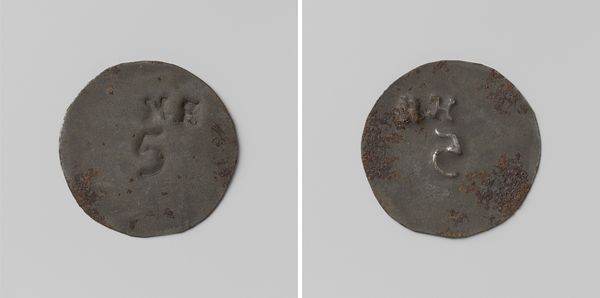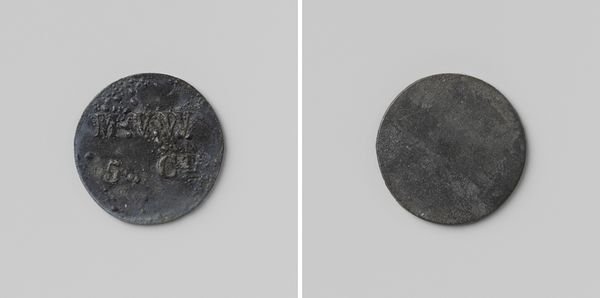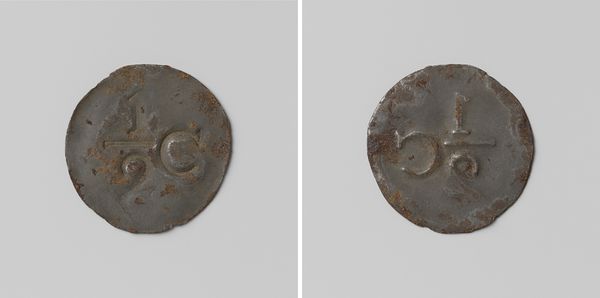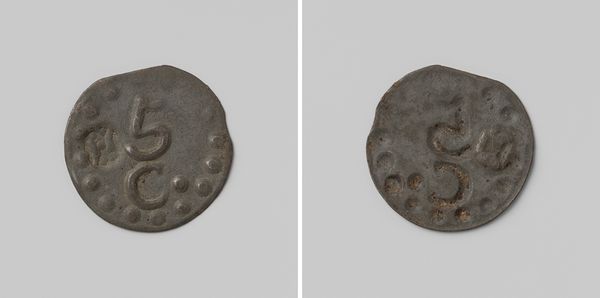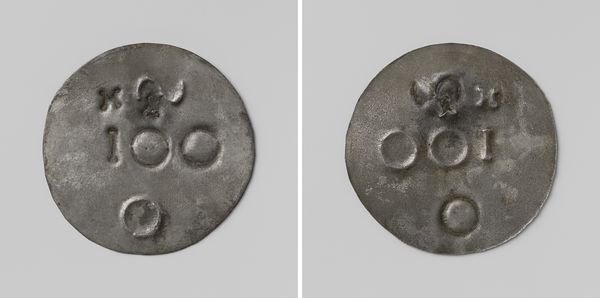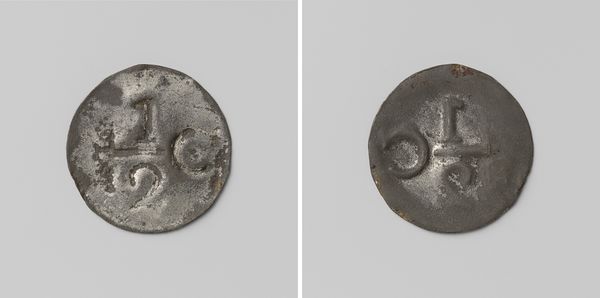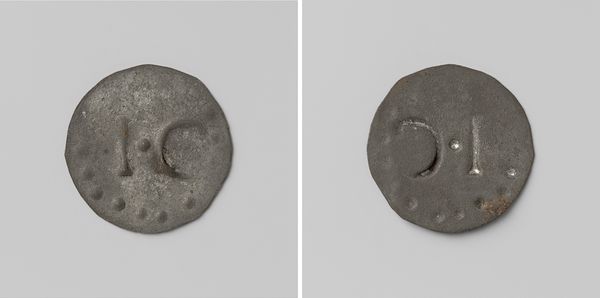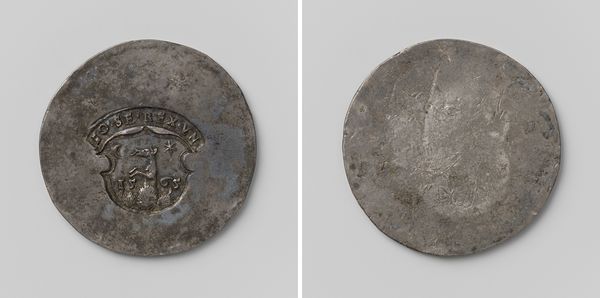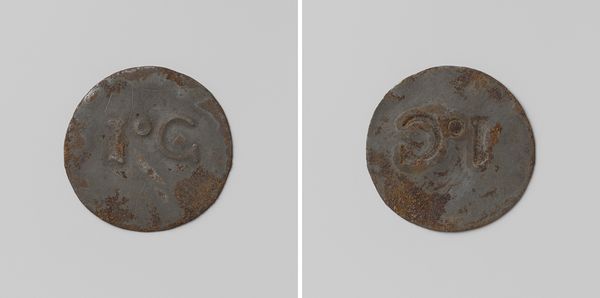
Strafgevangenis Ommerschans, huismunt geslagen op last van de Maatschappij van Weldadigheid ter waarde van vijf cent before 1830
0:00
0:00
print, metal, bronze
#
medieval
# print
#
metal
#
bronze
#
ceramic
#
round circular shape
Dimensions: diameter 4.1 cm, weight 3.3 gr
Copyright: Rijks Museum: Open Domain
Editor: Here we have "Strafgevangenis Ommerschans, huismunt geslagen op last van de Maatschappij van Weldadigheid ter waarde van vijf cent," which roughly translates to "Ommerschans Prison, house coin minted by order of the Society of Charity worth five cents". It appears to be made of bronze or a similar metal, and it dates from before 1830. I'm immediately struck by its…simplicity, and also its slightly rough texture. What are your initial thoughts on it? Curator: It speaks volumes, doesn’t it? Consider the circular shape itself – echoing not just money, but also ideas of cycles, containment. The prison, the Society of Charity…it's all there. And the material is clearly meant to last; a deliberate statement, given where this coinage originated. Does the raised design hold significance, do you think? Editor: It looks almost medieval to me, those raised points, with the big “5” right in the middle. Like an attempt to modernize a historic seal. Is it naive to call it a symbol of control? Curator: Not at all! "Control" hits upon the duality. Currency usually signifies freedom of exchange, but this coinage…its inherent meaning turns in on itself within those prison walls. What do you think about the way its design holds cultural echoes, drawing upon centuries of visual vocabulary to project both authority and forced community? Editor: It makes me wonder what life was like there. And, what the psychological impact of this sort of currency must have been, given that it was specific to Ommerschans Prison. A tangible and ever-present reminder of their confinement, of a kind of forced collectivity that lacked…grace. It’s really rather bleak when you put it like that. Curator: Precisely. Bleakness, but also utility. This coin, an enforced connection with the world beyond – mediated, managed, symbolic of both the institution and, arguably, a desperate hope. It becomes more than just a five-cent token. Editor: Absolutely. Thanks so much! This piece really made me reconsider the history of money itself. Curator: Indeed. An object seemingly simple reveals complex strata of history and human experience when you begin to look at it closely.
Comments
No comments
Be the first to comment and join the conversation on the ultimate creative platform.
